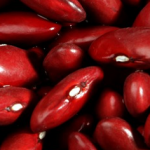Soy
Proteinuria
It is not common to lose large amounts of protein in the urine stream. Those who suffer from diabetes, however, are prone to excess urination and may experience protein loss in the process. It is important to note a small discrepancy, which is that excess proteinuria is not a cause, but rather a symptom, of impending kidney failure. While the exact effects of soy on the kidneys are still being researched, empirical evidence suggests that soy can promote kidney health due to studies which have shown a decrease of proteinuria in patients who were given supplements containing soy proteins. This bodes well for diabetics, as kidney failure is ranked slightly lower than heart disease as a leading cause of death.
Cholesterol
There are two types of cholesterol. The first is LDL, which is more commonly known as bad cholesterol. The second is HDL, which is more commonly known as good cholesterol. The effort to improve one’s cholesterol should revolve around both the reduction of LDL and the increase of HDL. Food products made from soy are considered healthy for diabetics due to their ability to assist both of these causes. When left unchecked, the buildup of bad cholesterol can pollute the arteries and lead to heart disease, which is one of the primary causes of concern for patients suffering from diabetes.
Antioxidants
Soy contains a particular type of antioxidants, known as isoflavones. These help to prevent heart disease by eliminating free radicals in the bloodstream. Isoflavones can also help to lower blood pressure, which is sometimes unnaturally high in diabetics. Not all of the benefits of isoflavones, however, are related directly to cardiovascular health. Obesity and insulin resistance are also two major factors affecting diabetics. Insulin resistance is one of the number one symptoms of type 2 diabetes, while obesity is one of the number one causes. Isoflavones can help to fight both of these concerns. While decreasing insulin resistance is a major factor in diabetes management, fighting obesity can help to both manage as well as prevent the disease.Arterial Health
The aforementioned cholesterol benefits are good for the arterial health of diabetes patients, as high cholesterol can reduce the flexibility of blood vessels through a condition known as atherosclerosis. Not only does the consumption of soy help to fight this condition by improving cholesterol, but it can also fight the condition more actively by allowing arterial walls to become more pliable. The isoflavones in soy can also help to eliminate triglycerides, clearing the arteries of excess fat.
Risks
Those who have not tried much soy in the past may have unknown soy allergies. Much like peanut allergies, soy allergies can be much more harmful than many would expect. Allergic reactions to soy can create respiratory issues, necessitating immediate treatment of symptoms. Research is also being conducted to investigate allegations that soy may have a negative impact on the thyroid. A decrease in thyroid function can lead to weight gain, which is the last thing any diabetic needs.
Usage
For those who are not allergic to soy and wish to share in its health benefits, there are a number of possible ways to implement soy consumption into a nutritious diet. Whole milk can be replaced with soy milk for uses in cooking or simply eating breakfast cereals. Faux meat products may be enjoyed, further decreasing heart risks by limiting consumption of red meats. Soy curd can also be cubed and used in stir fried dishes that contain healthy vegetables such as broccoli, carrots, asparagus, and Chinese water chestnuts.
























